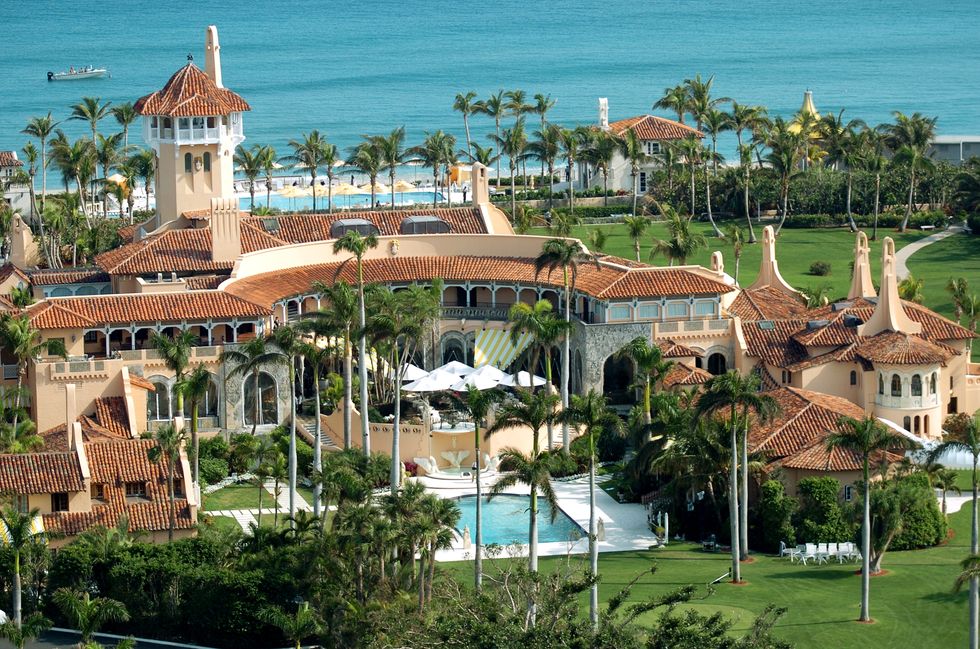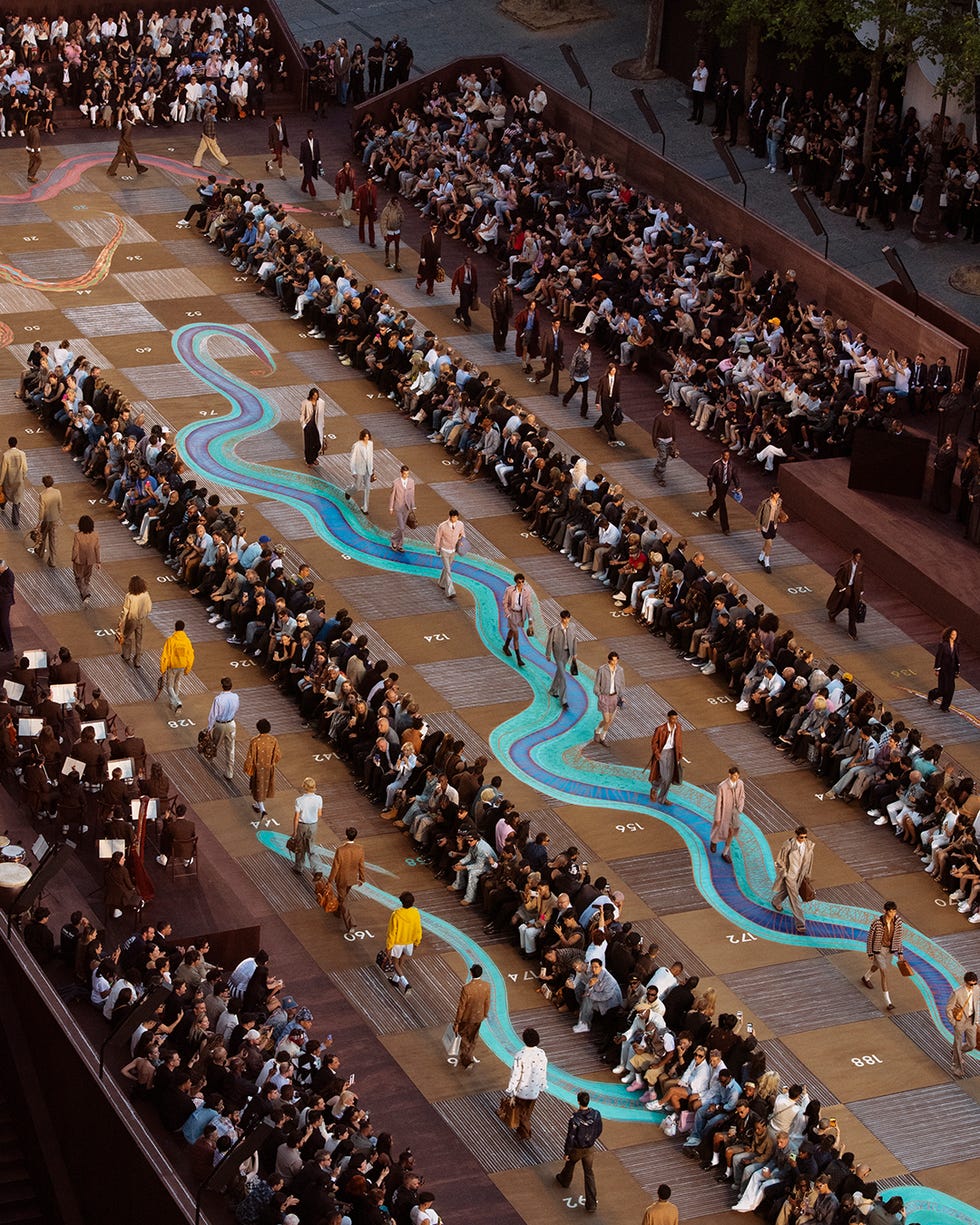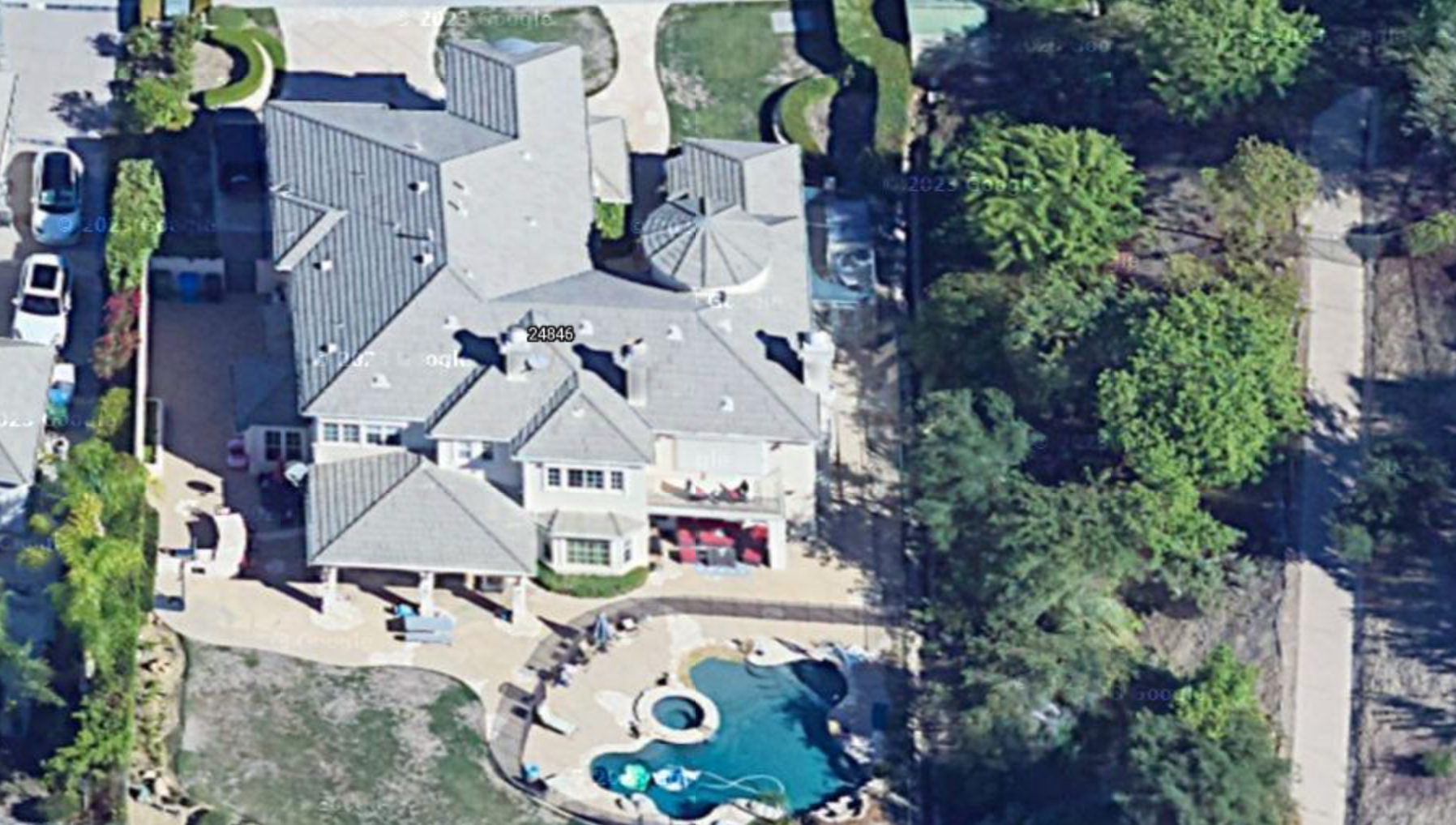These last few political cycles, one historic mansion has dominated the headlines. And no, it’s not the White House. Mar-a-Lago, a pink-tinged 1927 estate whose palm-fringed grounds sprawl across Palm Beach, Florida, is arguably the most talked-about building in America, since Donald Trump took office in 2017. In the eight years since, the private club has become the 47th president’s unofficial political hub and has hosted international dignitaries including Japanese prime minister Shinzō Abe, Chinese president Xi Jinping, and Brazilian president Jair Bolsonaro. It’s also been the site of controversies, ranging from a lawsuit involving a gigantic American flag to the storage of presidential records.
But Trump wasn’t the first to call Mar-a-Lago his “Winter White House.” In fact, its builder, the American heiress Marjorie Merriweather Post, wanted the property to become precisely that, decades before Trump made his political ambitions known. And, despite the property’s reputation for gilt interiors and glittering chandeliers, it remains on the National Register of Historic Places, and is one of the finest examples of 1920s architecture in Palm Beach. Read on for a complete history of the property.
Who Built Mar-a-Lago?
American businesswoman, heiress, and philanthropist Marjorie Merriweather Post commissioned Mar-a-Lago in 1923 to serve as a seaside residence for herself and her second husband, financier Edward F. Hutton. Post’s quest for a Florida residence coincided with a land boom that was transforming this once-swampy barrier island into one of the most fabulously wealthy enclaves in America. (According to Mar-a-Lago’s website, Post herself crawled through the dense underbrush with her realtor in search of the perfect plot of land).
Post had inherited her father’s business empire, Postum Cereal Company, and his vast fortune at the age of 27, making her one of America’s richest women. In addition to residences in Washington, D.C. and upstate New York (not to mention her private sailing yacht, Hussar V), Post had amassed a breathtaking collection of jewelry (now on view in the Smithsonian’s Harry Winston display) and a collection of Imperial Russian artworks.
«I’m not the richest woman in the world. There are others better off than I am,” the New York Times quoted Post in her 1973 obituary. “The only difference is that I do more with mine. I put it to work.”
What’s the History of Mar-a-Lago?
Given Post’s vast fortune, no expense was spared in building her Palm Beach palace—which translates to “sea to lake” in Spanish. In all, Post spent $7 million, approximately $123 million in today’s currency. For its design, she enlisted architect Marion Sims Wyeth, a pioneer of the Palm Beach architectural style, and Joseph Urban, the multi-hyphenate Austrian-American designer whose work included everything from Metropolitan Opera sets to the base of the Hearst Tower.
Mar-a-Lago was designed in the Spanish Revival style—typified by red tile roofs, stucco walls, and asymmetrical facade— the aesthetic that was de rigeur when it was built between 1923 and 1927. The crescent-shaped manse mirrored the scale of Post’s vast fortune, with more than 100 rooms and a 75-foot tower. According to National Park Service records, three boatloads of Dorian stone were shipped in from Genoa, Italy to clad the exterior. The 17-acre property, landscaped by Lewis and Valentine, was defined by lush, semi-tropical gardens, a nine-hole golf course, and a large patio for hosting illustrious guests, which on any given night—according to one 1929 New York Times account—could include a Greek princess, a Bulgarian prince, Virginia Fair Vanderbilt, or Millicent Hearst.
The theatrical, Spanish theme continued on the mansion’s interior, where one could find beamed ceilings, imported Spanish tile (some dating back to the 15th-century), elaborate iron work, and intricate carvings of pelicans, as well as the Merriweather and Post family crests. Like the 47th president, Post had a taste for gold, a material which could be found on elaborate cherubs carved into the doors and a gilt ceiling in the living room, inspired by one found at the Accademia in Venice. According to the National Park Service, it was difficult to find the artisans who could work with such finery.
Post and Hutton spent winters at Mar-a-Lago to enjoy the pleasant weather, participate in the buzzing social scene (Mar-a-Lago fetes were legendary and were even known to feature circus performances), and take in their dual views of the lake and the Atlantic. The couple divorced eight years after the estate was completed. Post married Joseph E. Davies the same year, but after the lawyer was appointed ambassador to the Soviet Union just two years later, the pair were dispatched to Moscow and later Brussels, and Mar-a-Lago remained closed for five years.
After World War II broke out, Post made fewer visits to her winter retreat. The house was even transformed into a training center for soldiers in 1944, according to the Palm Beach Post. The socialite began returning to Mar-a-Lago in 1948 and she continued to host lavish charity events, notably the International Red Cross Ball. She even tapped her architect, Marion Sims Wyeth, to design an outdoor pavilion with a sprawling dance floor—on which the socialite favored square dances—in 1961.
Throughout the 1960s, Post—by then on her fourth marriage—began considering the afterlife of all of her homes, Mar-a-Lago included. She first proposed to donate it to the State of Florida, to house scholars. The state, wary of high maintenance costs, turned down the offer. In 1968, she proposed transforming it into a “Winter White House” for future presidents of the United States and decided to bequeath it to the government upon her death, with the addition of a $100,000 maintenance allowance per year. She died in 1973 at the age of 86. A president did, indeed, check the place out at the time—Richard Nixon hopped on a helicopter for a surprise inspection in 1974—but by that time, the estate was so dingy, it was clear $100,000 per year would not be enough to keep the place up. Mar-a-Lago was given back to the Post Foundation in 1981.
How Did Donald Trump Get Mar-a-Lago?
Shortly after the government returned the estate to the Post Foundation, it was put on the market for $20 million. A handful of attempts to sell Mar-a-Lago came close to fruition (prospective buyers included the Marriott hotel group, a Houston developer, as well as “a pair of high-flying developers with a taste for wild parties and country music,” according to the Miami Herald), but the deals fell through.
Enter Donald Trump, who ultimately purchased the mansion and its grounds for less than $10 million in 1985. At the time, he was at the height of his real estate power, having just completed Trump Tower in New York and just purchased the New Jersey Generals football team. At first, he used the lavish property as a private residence. But soon, like the stewards that came before, it became clear that Mar-a-Lago was a financial albatross. In 1991, Trump caused a hubbub in Palm Beach when he proposed redeveloping the ground into eight separate lots called the Mansions at Mar-a-Lago. But after receiving pushback from the city council and after filing a $50 million lawsuit, Trump announced in 1993 that instead he would transform the ailing estate into a private members club. “I’m very happy,” Trump told the Miami Herald. “It’s going to be a great addition to the town of Palm Beach. With this approval I’m withdrawing my lawsuit against the town.”
More than four decades after her death, Post ultimately got her wish, that her pink Palm Beach paradise would become the de facto “Winter White House.” In fact, during his first administration, Trump made an estimated 134 trips to Mar-a-Lago, according to the watchdog group Citizens for Responsibility and Ethics in Washington. In 2019, Trump declared the club his full-time residence. Since his second inauguration on January 20, sources told the New York Post that the president plans to spend most of his weekends at Mar-a-Lago playing golf.

Anna Fixsen is the deputy digital editor of ELLE DECOR, where she oversees all facets of ELLEDECOR.com. In addition to editing articles and developing digital strategy, she writes about the world’s most beautiful homes, reviews the chicest products (from the best cocktail tables to cute but practical gifts), and reports on the most exciting trends in design and architecture. Since graduating from Columbia Journalism School, she’s spent the past decade as an editor at Architectural Digest, Metropolis, and Architectural Record and has written for outlets including the New York Times, Dwell, and more.










